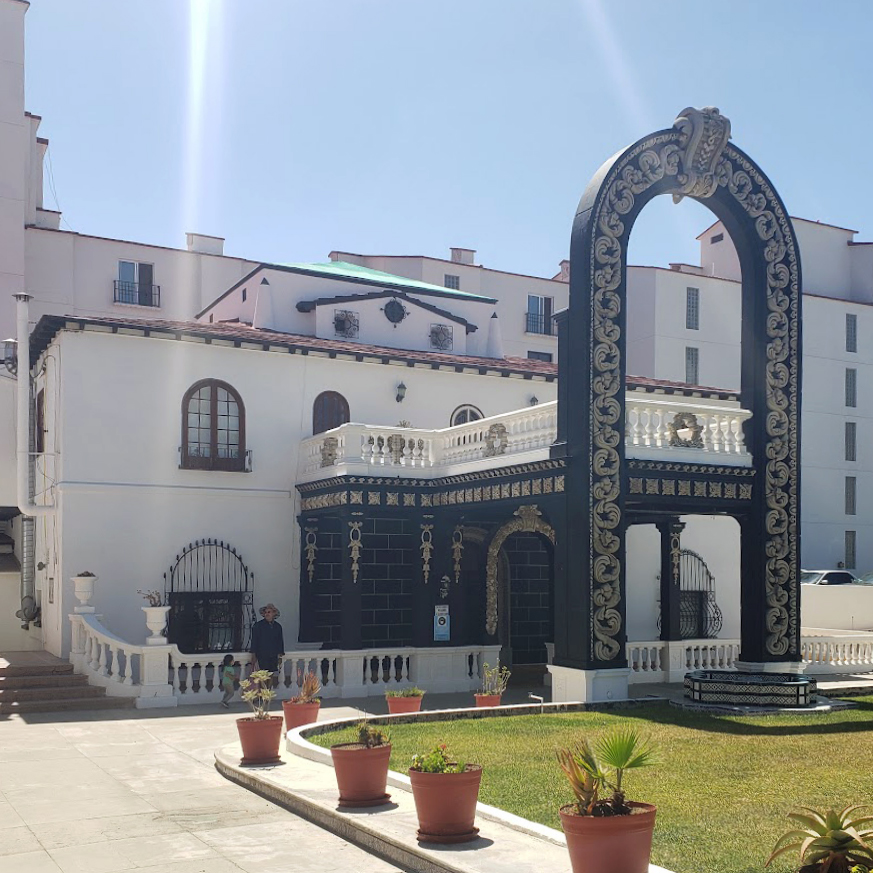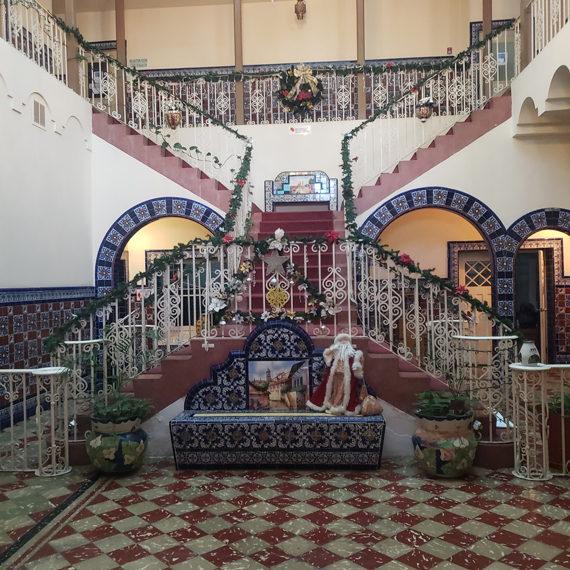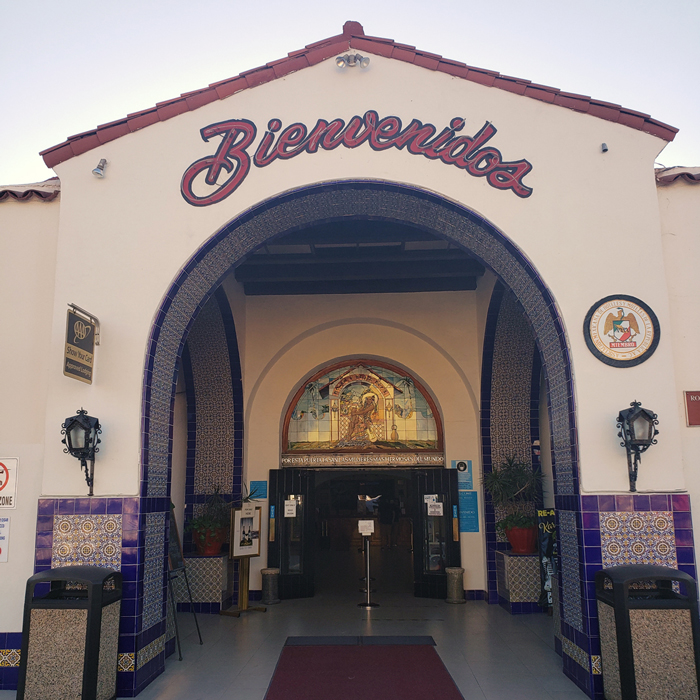|
Designations and Centennials of Caesar's Salad and
Rosarito Beach Hotel
By Maria Curry
May/June 2024
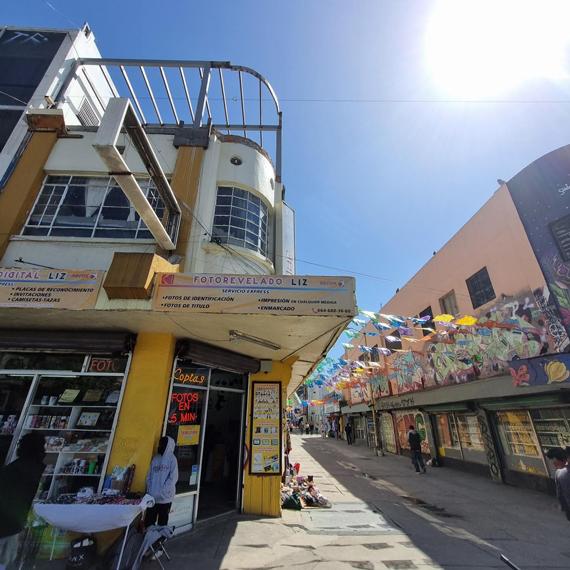 The first Caesar’s Place, owned by Caesar Cardini was on Callejón del Travieso near Calle Segunda in downtown Tijuana; the address is unknown. As Cardini stated, it was there where his salad was created on July 4, 1924. Photo by Andres Waldo |
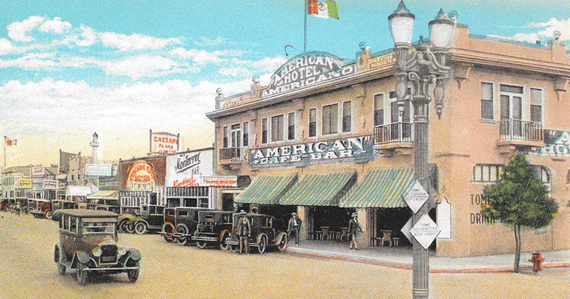 Caesar’s Place (c. 1930) next to Hotel Americano on Calle Segunda in Tijuana. Both the hotel and the restaurant are now drug stores. Courtesy Andre Williams collection. Archivo Histórico de Tijuana |
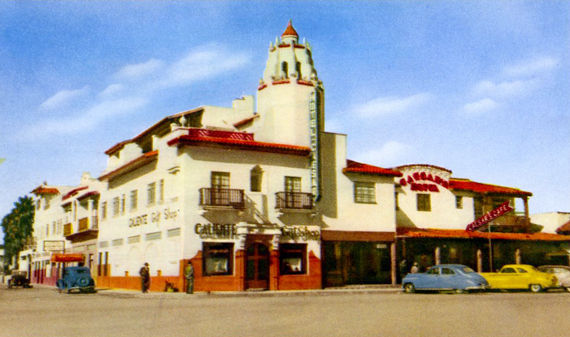 The Spanish Colonial style Hotel Caesar still serves the authentic salad today in the restaurant run by Grupo Plascencia. Postcard, 1948 |
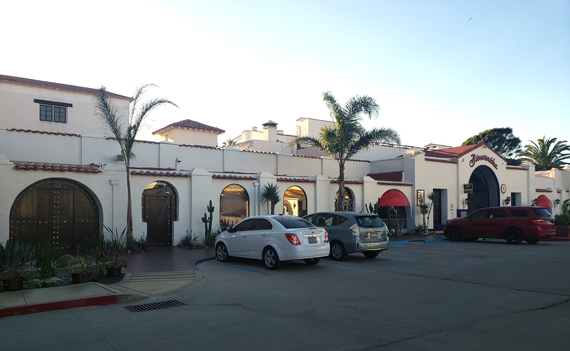 Rosarito Beach Hotel started in 1924 as a small roadhouse that grew through the years. The main Spanish Colonial entrance and areas from 1920-50 will be designated historic by the Baja California state government. Photo by Maria Curry |
The story goes that Italian immigrant Caesar Cardini invented the famous salad that bears his name on July 4, 1924, during an American Independence Day celebration in Tijuana at his restaurant, Caesar's Place. Today, the restaurant, now known simply as Caesar's, is part of Hotel Caesar. That same year marked the opening of the Rosarito Beach Hotel, originally established as a 10-room roadhouse named Rosarito Beach Country Club. During the next 100 years, the hotel grew to 500 rooms and the salad became famous worldwide.
To celebrate these centennials, the Baja California state government will designate the salad recipe and the Rosarito Beach Hotel as cultural resources. In their honor, a variety of cultural events are being organized in Tijuana and Rosarito, during the month of July 2024.
Celebrations include a gala dinner at Caesar’s Restaurant, the unveiling of a statue of Caesar Cardini on Avenida Revolución, a book launch for Historia de la Ensalada Caesar’s by Armando Avakian and Fernando Escobedo, and the introduction of a centennial wine from Casa Magoni of Valle de Guadalupe. Other planned festivities include a Caesar’s salad festival, music from the 1930s, a classic cars exhibition, a play, a concert by Baja California’s Orchestra, and food stands. All outdoor events will be held at Hotel Caesars on Avenida Revolución.
The salad recipe is associated with four sites in downtown Tijuana. The first was a restaurant dating to c. 1923 on Callejón del Travieso, where some historians believe the salad recipe was invented. The second restaurant, known as Caesar’s Place (c. 1926-27), was on Calle Segunda near the Hotel Americano, seen in the photo to the right. The third site was a small Spanish Colonial style hotel and restaurant known as Hotel Caesar’s Place (c. 1927-1934) on Avenida Revolución. After several additions, including a tower, it became the famous Hotel Caesar. The fourth restaurant, identified as “Original Caesar’s Place,” operated inside the Classic Revival style Hotel Comercial (1934-36) on Calle Segunda. The restaurant moved to Hotel Caesar on Avenida Revolución and proudly serves the salad today.
Cultivating Cultural Tourism
Rosarito Beach Hotel president Hugo Antonio Torres announced the 100-year celebration of the historic hotel, which was built by businessman Manuel Barbachano. The state government has approved a historical designation of the oldest section of the complex (1920-1950s). At a press conference, Torres announced the opening of an art gallery and museum featuring the histories of Barbachano’s family and the hotel. Various paintings from the hotel’s collection are being preserved and restored. The hotel administration is concentrating on cultivating a cultural tourism niche to enhance the allure of this beach destination and to attract more visitors. The hotel is currently embellishing its common areas and remodeling its guest rooms in preparation for the July celebration.
The small country club in Rosarito founded in 1924 became the iconic Spanish style building we see today. By 1932, fifty rooms had been added. Later additions include a foyer, the Salón Mexicano ballroom, and the Azteca Restaurant. In 1937, Mr. Barbachano built an elegant mansion next to the hotel for his wife María Luisa Chabert. Today, this mansion is home to the hotel's Casa Playa Spa and Chabert's Restaurant. During Prohibition, the hotel’s beauty and oceanfront location drew Hollywood stars, politicians, and other notable visitors, and today, it continues to attract many families year-round.
The centennial celebrations are of interest to the Rosarito community and among tourists interested in Baja California’s cultural, culinary, and architectural history. For more information on the upcoming events, visit the websites for Hotel Caesar and Rosarito Beach Hotel.
|
2025
2024
2023
2022
2021
2020
2019
2018
2017
2016
2015
|





